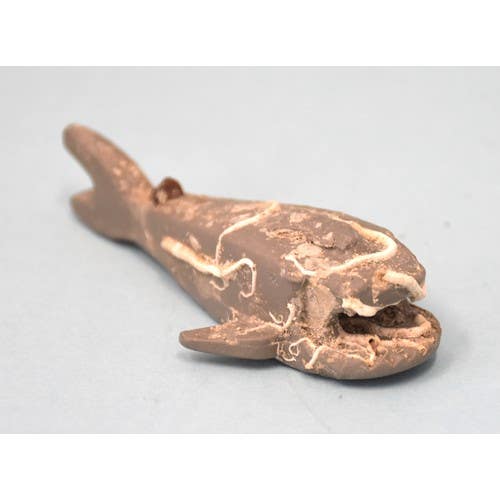From Cowboys to the Cosmos
The rise of the action figure, tracing its journey from cowboy TV heroes and plastic soldiers to G.I. Joe, Mego superheroes, Star Wars legends, and today’s powerhouse collectibles.
I’ll admit it. I wasn’t much of an action figure girl. Barbie, Ken, Skipper, sure, but G.I. Joe never marched through any of my Barbie play scenarios. If he had, I probably would have married him off to Astronaut Barbie and sent them on a backyard honeymoon in Barbie’s Austin-Healey 3000.
The closest I came was Stretch Armstrong, whose rubbery limbs could extend four feet from fingertip to fingertip. He doubled as a slingshot whenever I got the urge to pelt my siblings with Super Stuff, the gooey pink slime that began life as powder but stuck to almost anything and everything once mixed with water (except Stretch Armstrong, for some reason). Beyond Stretch, though, action figures mostly belonged to the neighbor boys next door, who seemed to have multiple armies of plastic heroes lined up on their bedroom floors.
The Dawn of Plastic Heroes
Action figures may not have had a starring role in my childhood, but they were already transforming playtime during the 1950s and 1960s. In the 1950s, companies like Marx and Hartland were riding America’s love affair with television Westerns. They transformed America’s cowboy craze into plastic form, with figures of Roy Rogers, Dale Evans, the Lone Ranger, and Davy Crockett. Hartland’s versions stood out for their detailed, painted outfits, molded saddles, and accessories, such as reins and hats. Although they weren’t articulated like later figures, kids certainly didn’t mind. For the first time, they could ride along with their Saturday morning TV heroes. Today, complete sets with both horse and rider remain especially collectible, with top prices for examples that still include the original box.
Meanwhile, another kind of plastic hero was entrenched in sandboxes everywhere: the humble army man. Louis Marx & Company and other makers produced molded soldiers in every imaginable pose, from crawling and crouching to aiming and tossing a grenade. Sold by the bagful, they were cheap, nearly indestructible (though few survived the family dog), and endlessly deployed in dirt-pile battles. Unlike Roy or Davy, army men never left the field; they are still with us today, the toy equivalent of a Timex watch, taking a licking and keeping on ticking. Their simplicity and resilience make them less flashy in the collector market, but they remain one of the longest-lived staples of childhood play.
By the mid-1960s, kids were ready for something bigger, more detailed, and more lifelike. That leap came in 1964, when Hasbro introduced G.I. Joe and forever changed the scale and definition of what an action figure could be.
The 12-Inch Revolution
Everything changed with the introduction of G.I. Joe, the first actual “action figure.” At a foot tall, Joe came with movable joints, swappable uniforms, and detailed gear for every branch of the U.S. military. Hasbro even coined the term “action figure” to avoid calling him a doll, easing him into households nationwide. Joe became more than a toy for a generation of boys growing up in the shadow of World War II and the Cold War. He was a miniature hero they could enlist, equip, and send on missions of their own making.
Collectability today hinges on Joe’s condition and completeness. Early “painted hair” figures from 1964 are especially prized, with mint figures commanding premium prices. Accessories like helmets, rifles, and footlockers are often harder to find than the figures themselves. The line proved so successful that it laid the groundwork for decades of development, shifting the market from static figurines toward fully poseable, character-driven action figures.
Captain Action: The Hero of Many Faces
Hot on the heels of G.I. Joe’s success, Ideal Toys launched Captain Action in 1966. The 12-inch figure came with a muscular body, stern expression, and a closet full of possibilities. He could transform into Superman, Batman, Spider-Man, the Lone Ranger, Captain America, and more (with the proper costume set). He was one of the earliest experiments in multi-licensed play. His run lasted only a few years, but Captain Action left a lasting impression on collectors. Complete costumes are notoriously hard to find today; masks often tore, and accessories like Superman’s cape or Batman’s utility belt, much like the dryer/sock phenomenon, vanished into the depths of the toy box, never to be seen again. When intact, these sets are coveted collectibles, highlighting the early marriage of comics to toys and foreshadowing the licensing explosion that would soon define action figures.
Early ’70s Powerhouse Lines
$150–$400, depending on condition and extra accessories. Image courtesy eBay seller dxxs.
By the early 1970s, action figures had traded the battlefield for backyard adventure. Hasbro’s G.I. Joe evolved into the Adventure Team, swapping fatigues for safari shirts, scuba gear, and “Kung-Fu Grip” hands. Mattel answered with Big Jim, a 10-inch muscleman whose spring-loaded karate chop and flexing biceps gave him playground bravado. And Evel Knievel, America’s daredevil of the decade, got his own crank-powered stunt cycle, which sent him sailing off backyard ramps. Collectors today hunt for working mechanisms and intact decals. Broken joints and missing stickers are common casualties of rough-and-tumble play.
Licensing and Innovation
Image courtesy eBay seller sparlordstoys.
While kids were busy chopping, flexing, and jumping ramps, two new lines shifted the industry in game-changing ways. In 1972, Mego’s World’s Greatest Superheroes brought DC and Marvel characters to life in 8-inch form, with cloth costumes, boots, and accessories. Batman could battle Spider-Man, or Captain Kirk could team up with Planet of the Apes. A few years later, Mego struck gold again with Micronauts, a line of 3.75-inch interchangeable sci-fi figures imported from Japan. Their modular design, smaller scale, vehicles, and playsets directly influenced what came next.
The Arrival of the Galaxy
By 1977, the toy world was primed for a revolution. Kenner’s Star Wars figures shrank the format to 3.75 inches, a scale that allowed for more figures and vehicles, as well as playsets and entire worlds to be built around them. The “Early Bird” mail-away sets became instant icons, changing how kids played and toys were marketed. For the first time, a movie and its merchandise were inseparable, and the runaway success of Star Wars proved that licensing, hinted at earlier by Captain Action and Mego, could fuel an empire of collectible plastic.
The enduring power of Star Wars figures was proven in 2024, when a rare Boba Fett action figure sold for $525,000 at Heritage Auctions’ Star Wars Signature Auction, setting a Guinness World Record for the most valuable toy sold at auction. Produced in 1979 but never released because its rocket-firing backpack was deemed a choking hazard, this prototype is one of only two known figures. The sale set a new benchmark for the hobby and elevated Boba Fett to worldwide mythic status.
Beyond the Force
Star Wars did not just dominate the late 1970s; it reset expectations for decades to come. Competing lines like Battlestar Galactica, Buck Rogers, and Disney’s The Black Hole rushed to capture the same magic. At the same time, the early 1980s ushered in new legends: Indiana Jones, Masters of the Universe, Transformers, and Teenage Mutant Ninja Turtles. By the 1990s, the action figure had fully matured into both a toy and a collectible, with lines like Spawn and the rebirth of Star Wars figures now targeting adults as much as children.
From Marx cowboys to Kenner stormtroopers, action figures evolved alongside pop culture itself. For collectors today, they are more than toys; they are time capsules of the eras that shaped them, plastic heroes that have truly stood the test of time.
You may also like:








